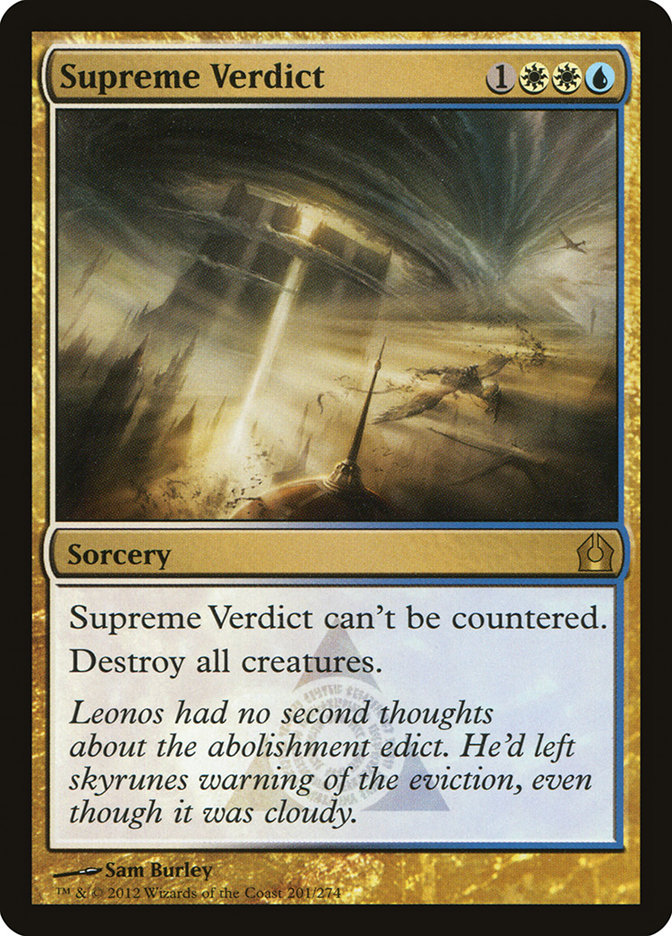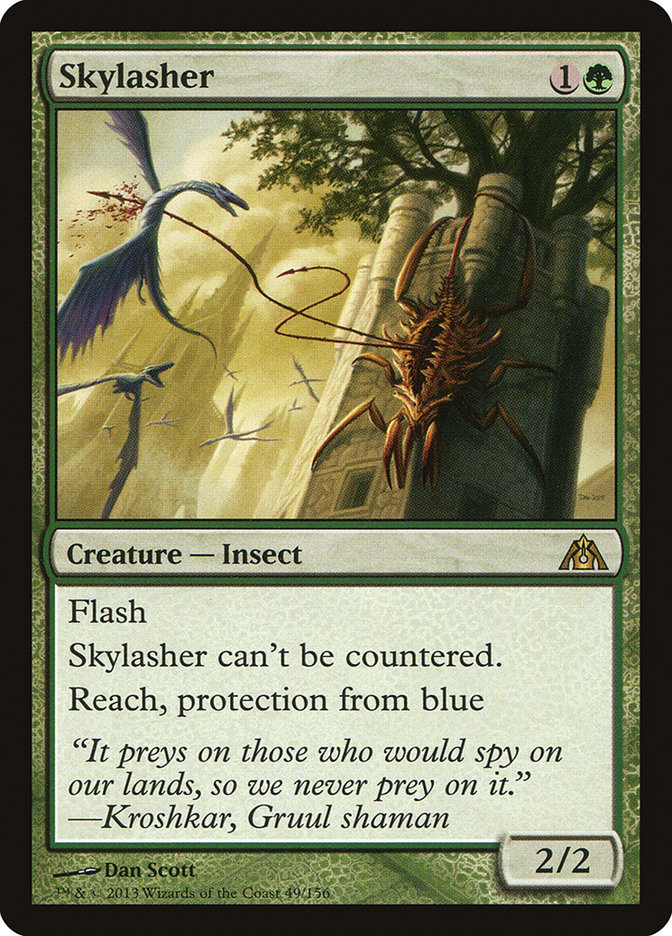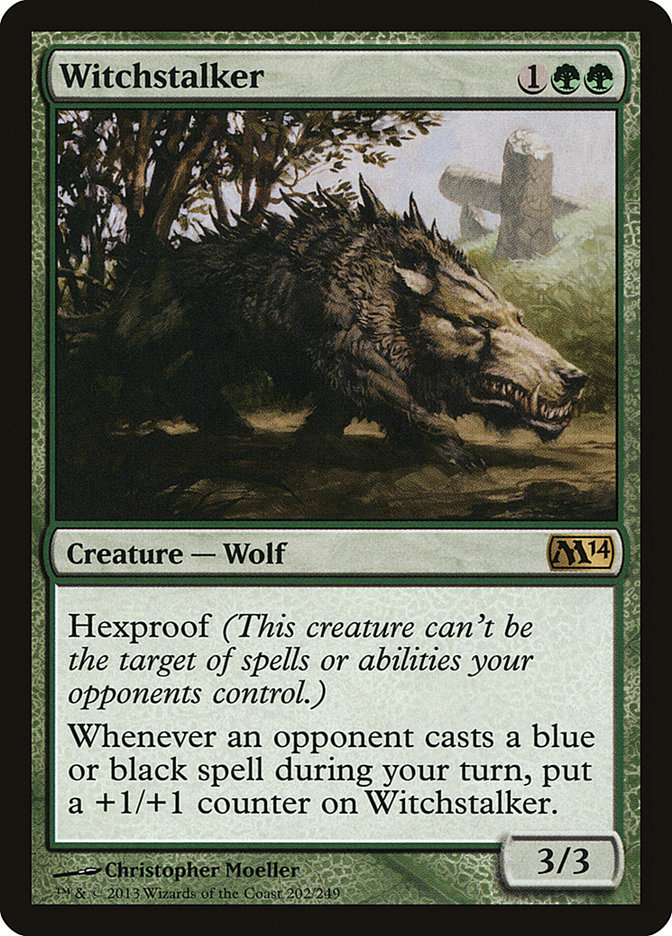Bow your heads before the power of the Gods! At least, of some of the Gods. Thassa, God of the Sea was rated very highly during the prerelease and then she came underwater to break the Pro Tour with one of the most popular and successful decks. Ways to build a deck around Thassa were plentiful, but once the professionals got their hands on the God of the Sea we saw what could really happen. Due to it winning the Pro Tour, I expect the deck to be even more popular than it already is. However, Thassa isn’t the only God to shine in Dublin; Forge[/author]“]Purphoros, God of the [author name="Forge"]Forge[/author], Erebos, God of the Dead, and even Nylea, God of the Hunt joined Thassa in the Top Eight of the Pro Tour, leaving Heliod, God of the Sun as the only God lacking recognition.
Unfortunately for the white God, I’m not the one to please him; my topics for today are an upgrade of the Hypermana Green/Red deck from my previous article (a version made the top 8 of Pro Tour Theros), a mirror-oriented Thassa deck (19th place at Pro Tour Theros), and a fresh brew aiming to beat Mono-Blue Devotion. Let’s look at these topics in the reverse order (just because I like to show you an untested brew before you get bored by Devotion Discussion #1001).
The starting point is Thassa, God of the Sea. I expect it to be very popular in the upcoming weeks, but am a bit skeptical about its long-term prospects: with such a strong debut, the clear and understandable weak points must provoke a strong reaction and metagame shift unfavorable to devotion decks. However, this week will be the week of hype, so you’d better be able to beat Mono Blue Devotion if you’re planning to attend the StarCityGames.com Standard Open in Seattle. The best way to do so is to prevent them from having enough devotion to animate Thassa, God of the Sea. The best way to do that?

Yes, that’s the way, but you should be aware that both Mono-Red Aggro and G/W Aggro will be popular no matter what. Moreover, I was never good with Supreme Verdict decks, so let’s look at another approach I believe to be good.
 Instead of sweeping their team away, you could start an unfair race and kill their key threats with pinpoint removal. How does one make the race unfair? Pro Tour Theros showed a good way in Mistcutter Hydra. Mistcutter Hydra is very hard to deal with without Mutavault or Rapid Hybridization (who die to removal too). However, Standard contains not one but two creatures with protection from blue. The second one is the outdated Delver of Secrets hoser, Skylasher. I don’t believe in the tiny spider’s long-term prospects, but it could be a reasonable role-player.
Instead of sweeping their team away, you could start an unfair race and kill their key threats with pinpoint removal. How does one make the race unfair? Pro Tour Theros showed a good way in Mistcutter Hydra. Mistcutter Hydra is very hard to deal with without Mutavault or Rapid Hybridization (who die to removal too). However, Standard contains not one but two creatures with protection from blue. The second one is the outdated Delver of Secrets hoser, Skylasher. I don’t believe in the tiny spider’s long-term prospects, but it could be a reasonable role-player.
Skylasher isn’t good when put side-by-side next to Voice of Resurgence or Fleecemane Lion, but it’s good against Master of Waves and Supreme Verdict – especially if you can take Supreme Verdict out of their hand with Thoughtseize. Black and green also allow a bunch of interesting cards to support this variant of aggro/tempo strategy. Let’s look at a rough draft:
Creatures (26)
- 3 Scavenging Ooze
- 2 Dreg Mangler
- 4 Experiment One
- 4 Skylasher
- 4 Elvish Mystic
- 3 Witchstalker
- 4 Boon Satyr
- 2 Mistcutter Hydra
Lands (22)
Spells (12)

The deck has a relatively low and aggressive mana curve supported by Thoughtseize and cheap removal. Moreover, when it comes to playing against sweepers we have eight flash creatures and four haste ones. The deck also has access to cards like Polukranos, World Eater and Desecration Demon, but as it’s positioned as an answer to Mono Blue Devotion, Mistcutter Hydra is the best. The sideboard creature of choice is Reaper of the Wilds. It’s easier to cast and more reliable than Desecration Demon, and it’s probably more devastating against creature decks than Polukranos (as it helps turning attacks and removal into scrying). Reaper of the Wilds doesn’t die to two-mana removal and is nearly unkillable if you untap with it. I think that it could easily be placed into the maindeck if you build a better-balanced list instead of an anti-Blue one.


Another maindeckable anti-blue card is Witchstalker. I’m not completely sold as it’s not as spectacular against creature decks, but Witchstalker gets out of control against Thassa, God of the Sea decks very quickly, giving it a place in the maindeck because it also has bonus utility against cards like Firefist Striker. However, scavenge and haste are useful too, so I decided to split those slots between Witchstalker and Dreg Mangler at least until I’m sure which one is better in our new metagame.
The disruption package includes four maindeck Thoughtseizes backed up by sideboard access to Duress and Lifebane Zombie. Disruption is important as our creatures aren’t as powerful, but it’s also important to time your disruption well. I put only four Swamps in the manabase as I prefer casting Thoughtseize on turn three, aiming to maximize my chances of hitting Supreme Verdict. From other points of view, it would be better having more; for example, I decided to omit Lotleth Troll (whom I might play here in less wavy environment) to make the manabase better.
The removal package includes the obvious playset of Doom Blade, the slightly less obvious Putrefy (Hero’s Downfall is harder to cast), and a rare guest card sneaking into this maindeck: Golgari Charm. Yes, this card is a nonbo with our own Elvish Mystics, but it’s worth it. Golgari Charm is better than Supreme Verdict against Master of Waves, it’s great against Supreme Verdict itself, and there’s hardly a matchup right now where Golgari Charm has no uses. Sideboard additions to our removal package are Fade into Antiquity against Gods and their weapons, Ultimate Price to improve our position against Desecration Demon, and Hero’s Downfall to deal with planeswalkers.
This green-black creation aims to beat Mono Blue Devotion, but it may be too narrow for a diverse metagame. I still believe that the deck has potential, but its exact form still needs to be determined. However, sometimes it’s just better to join ’em, especially if you prefer blue to other colors and aren’t very afraid of inevitable hate.
I was aware of Thassa, God of the Sea existence from various sources like Magic League (which showed mono blue and blue-black aggressive approaches) or Mark Nestico article, but I was silent as a fish as Mark’s article inspired a group of Russian players for their the Pro Tour deck. Honestly, I wasn’t excited by their list because, like Osyp Lebedowitz, “I should have put two-and-two together when only one person in our entire playgroup was even testing with Supreme Verdict”. So our team anticipated having no problems with sweepers and went into the blue-white devotion deck built by Magic Online grinder Dmitry Medvedev and used by Alexey Shashov and Sergey Demidov for respective 19th and 53rd places.
Team StarCityGames’ list progressed into having as low mana curve as possible and going aggro. However, this way isn’t the only one possible. Some Swedes decided to play a blue-black aggressive build with interesting cards like Galerider Sliver (actually not that bad idea for a deck with four Mutavault); Russians came to Dublin with a much heavier build, trying to combine tempo with a strong late game. The list may look a little bit strange, but it’s solid and, more important, it’s great in the mirror match.
Creatures (23)
- 4 Lyev Skyknight
- 3 Frostburn Weird
- 1 Lavinia of the Tenth
- 4 Tidebinder Mage
- 3 Thassa, God of the Sea
- 4 Master of Waves
- 4 Vaporkin
Planeswalkers (4)
Lands (25)
Spells (8)
Sideboard

Yes, that’s a Vaporkin. We call this one “Tern Aggro” in an honor of everyone’s beloved draft all-star, Welkin Tern. Lyev Skyknight does similar work even if for three mana instead of two. These creatures are not as cheap as Judge’s Familiar, but beat harder and more reliably which is important. These x/1s are miserable if opponent’s hand contains Electrickery, but when it doesn’t, you’ll tap their best creature with Tidebinder Mage, detain their second-best one with Lyev Skyknight, and then casually win the race. This also allowed building a deck less centered on Thassa, God of the Sea (while I think that just three copies may be a mistake).
Many words will be said about Master of Waves during the next days, but the top of this deck’s curve is Lavinia of the Tenth. The Azorius champion is completely under the radar, overshadowed by other powerful creatures like Blood Baron of Vizkopa or Aetherling, but it’s exactly what this deck needs. Lavinia of the Tenth fills the slot occupied by Thassa’s Bident in other builds. Bident provides a strong advantage when you can reliably connect with your opponent, but it’s weak when you’re playing from behind. Lavinia, however, does all the work immediately upon entering the battlefield, allowing your 2/1 Elemental tokens and 3/2’s to connect to opponent’s life total and even preventing the opponent from swinging back.
Yes, five mana is huge, but you’re able to survive that long against non-red decks, so there is nothing troublesome in casting it. Moreover, just as five mana is huge for you, so too is it for your opponent’s cards: you may expect that most of their board will be detained. I’m not sure if this tempo approach with Lavinia of the Tenth, Vaporkin, and Lyev Skyknight is better than advantage approach of Bident of Thassa and maximizing Nightveil Specter, and I don’t know how the metagame will react to Master of Waves’ presence, but it deserves trying even if my list from the beginning of this very article contains maindeck Golgari Charm.
One more card vulnerable to Golgari Charm but great in any other circumstance is Detention Sphere. It’s a great answer to opposing Gods, planeswalkers, and monsters, and a very reliable devotion source, helping to stand up in the face of sweepers. Jace, Architect of Thought is a fine devotion source and a good way to win the race too, not to mention drastic increases your chances in any control matchup. Team Danube Monarchy ran four copies of Jace maindeck while Russians decided to play to copies of Jace, Architect of Thought and two copies of the even-more-powerful Elspeth, Sun’s Champion to increase preboard chances in mirror matches and against control decks.
This blue-white version is more stable and fine-tuned to beat its kinsmen – which is going to be very important in upcoming weeks. This isn’t the only way, but I believe that Thassa, God of the Sea will be one of the most popular topic this week, so I leave it and go to the last section of my article: discussion of the hypermana deck played by Makihito Mihara.
Creatures (28)
- 3 Scavenging Ooze
- 4 Burning-Tree Emissary
- 4 Elvish Mystic
- 4 Polukranos, World Eater
- 2 Nylea, God of the Hunt
- 4 Sylvan Caryatid
- 3 Arbor Colossus
- 4 Voyaging Satyr
Planeswalkers (9)
Lands (23)

I’m nowhere close to Mihara in any metric (except maybe height), but I’m super excited to see this deck. I often watch what he’s playing as his choices are usually close to what I like in respective formats – and this Pro Tour was no exception. I spent a lot of time last week testing and polishing the hypermana ramp deck – and I was happy with my final list until I saw Mihara’s deck. However, it’s an honor for me to see that on one of the best players in the world came to similar conclusions and put the idea onto the next level.
The main weakness of my list is that I picked a good idea requiring total devotion (even more that Gods of Theros typically require) and then tried to find a compromise between the idea and the metagame. The right way was, obviously, to go as hard as possible. That’s my ugly duckling for the reference, and let’s compare it with Mihara’s beautiful swan.
Creatures (28)
- 3 Scavenging Ooze
- 4 Zhur-Taa Druid
- 2 Elvish Mystic
- 3 Satyr Hedonist
- 2 Polukranos, World Eater
- 4 Ember Swallower
- 4 Sylvan Caryatid
- 4 Stormbreath Dragon
- 2 Boon Satyr
Planeswalkers (5)
Lands (24)
Spells (3)

What did I do right and what wrong?
Mihara’s deck has much more reliable manabase. I was hypnotised by Ember Swallower and Stormbreath Dragon and so built a very red-heavy manabase with only two copies of Nykthos, Shrine to Nyx. Mihara utilized the less objectively powerful Abror Colossus, which allowed him to build in super-reliable mana with four copies of Nykthos.
I correctly stated that the deck should contain much more mana acceleration than the early versions of G/R Monsters. However, this different mana curve led me to a two-two split of Elvish Mystic and Satyr Hedonist instead of four Elvish Mystics. More important, Mihara’s better mana and four copies of Nykthos, Shrine to Nyx allowed him to take significant advantage of Voyaging Satyr, which wasn’t the case for my list. My prediction favoring control decks’ significant presence wasn’t right, either. This wrong prediction led me to Zhur-Taa Druid instead of attempt to maximize Voyaging Satyr’s value.
Another consequence of Mihara’s heavy-green manabase and green finishers is Garruk, Caller of Beasts, who puts the deck up into a new level. Searching for threats and thus mitigating flooding issues with all that mana enabling but not enough stuff, putting monsters into play and even providing lending towards devotion. Yes, that’s a devotion deck too, even if the main beneficiary of devotion is not accordingly a God but a legendary land (which is a shrine to Nothing, right?).
Four copies of Nykthos, Shrine to Nyx allows Mihara to maximize the value of Nylea, God of the Hunt. Trample is a huge upgrade to both Arbor Colossus and Polukranos, World Eater, while pumping goes with the point “You must be able to turn your mana cards into powerful weapons in their own right.”
Mihara’s deck is much more combo-ish (as calling it hypermana-style presumes). Just imagine: you put Polukranos, World Eater into play with Garruk, Caller of Beasts’ ability, then tap Nykthos, Shrine to Nyx, then untap Nykthos, Shrine to Nyx… A powerful combo in a format where combo should not exist – that’s a great deckbuilding achievement which every brewer would hope to repeat.
I like brewing, but I like learning even more, even if it’s learning from my own mistakes. I like Magic because it offers many opportunities to learn and improve; Pro Tour Theros showed us a sea of innovation, but it’s just the beginning of the story. The StarCityGames Standard Open in Seattle will be the next chapter, and even more interesting story will follow at StarCityGames Invitational in Indianapolis. So, never stop learning and don’t miss a chance to write your name into history!
